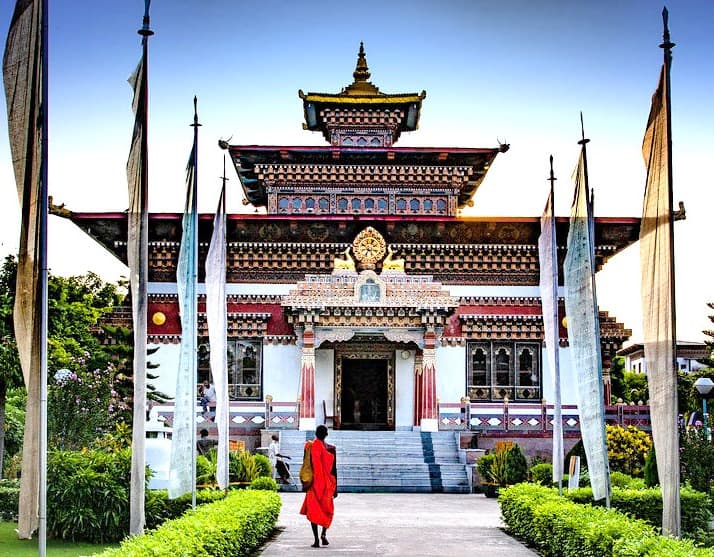Dzongs are iconic fortresses that embody the cultural and spiritual heart of Bhutan. These magnificent structures, such as Punakha Dzong, Paro Dzong, and Trongsa Dzong, serve dual purposes as monastic homes and government offices, illustrating the seamless integration of secular and spiritual life in Bhutanese society. Renowned for their strategic locations and distinctive Bhutanese dzong style architecture, each dzong hosts significant dzong festivals that are pivotal to Bhutanese culture. The historical dzongs of Bhutan are not only essential to understanding the nation's past but are also vital for experiencing the living heritage of Bhutan. Whether you're exploring the extensive Trongsa Dzong history, marveling at the Thimphu Dzong architecture, or planning a Paro Dzong tour, these dzongs offer a profound glimpse into the cultural significance of dzongs in Bhutan.
At Druk Holidays, we pride ourselves on being the premier choice for exploring the majestic Dzongs of Bhutan. Our deep-rooted connections and extensive knowledge of Bhutan’s cultural heritage allow us to offer unparalleled guided tours of dzongs in Bhutan, making every trip both educational and enlightening. Whether you're drawn to the intricate Bhutanese dzong style architecture or the vibrant dzong festivals, our expert guides ensure you experience the true essence of Bhutan. We go beyond the typical tourist path to provide a genuine insight into the spiritual significance of dzongs in Bhutan, making your journey with us not just a tour, but a profound immersion into the heart of Bhutanese culture.
Punakha Dzong
Punakha Dzong, also known as Pungthang Dewachen Phodrang (Palace of Great Happiness), is one of the most breathtaking and significant dzongs in Bhutan. Built-in 1637 by Zhabdrung Ngawang Namgyal, it is the second oldest and second-largest dzong in Bhutan and has played a pivotal role in the country’s history. Situated at the confluence of the Pho Chhu and Mo Chhu rivers, its strategic location and architectural majesty make it a must-visit for anyone traveling to Bhutan.
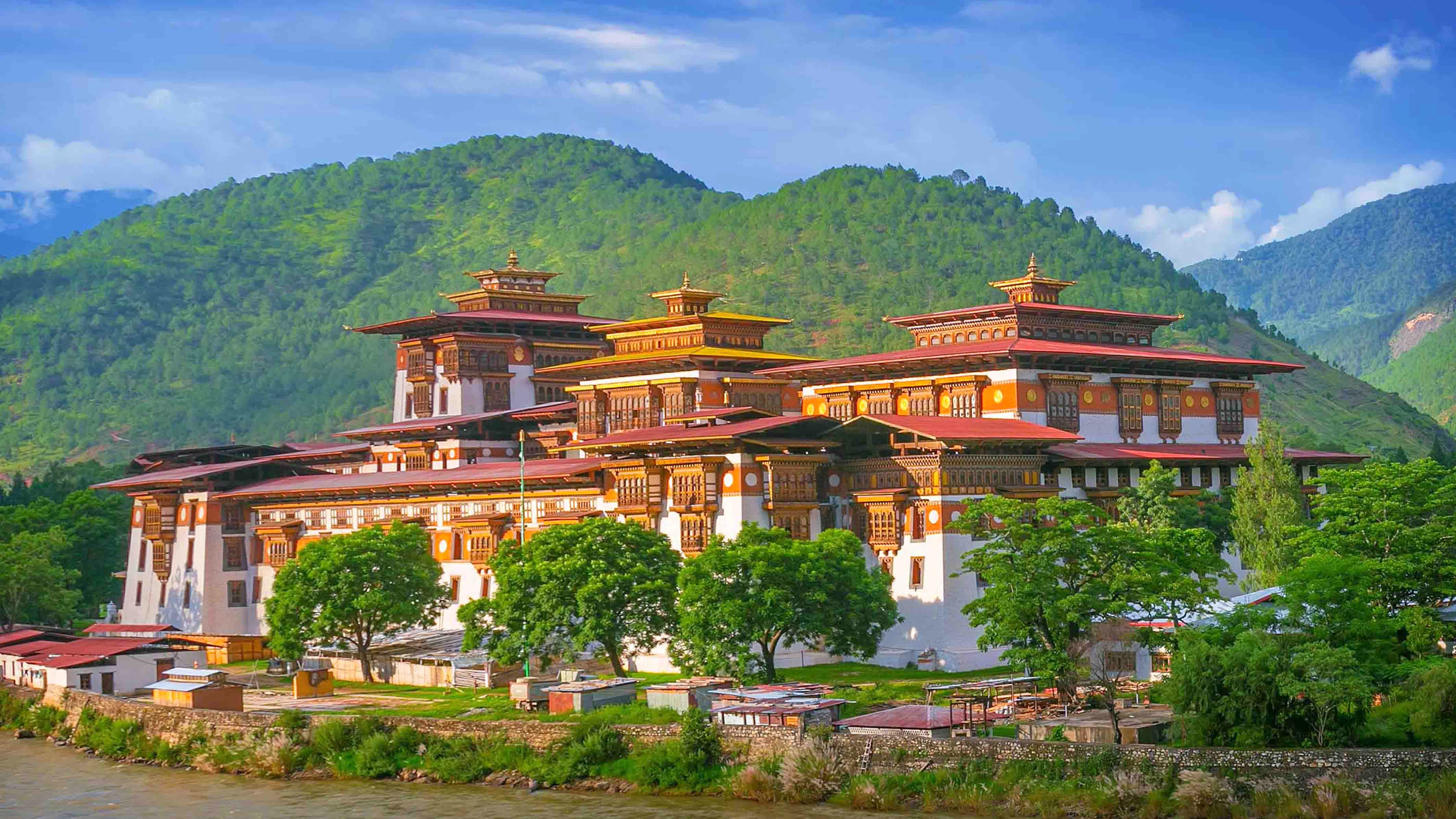
- Architectural Grandeur: Punakha Dzong is renowned for its stunning structure and intricate details, featuring finely crafted woodwork and beautiful reliefs that adorn its halls and courtyards.
- Strategic Location: The dzong's location at the confluence of two major rivers not only provides natural beauty but also historically served strategic defensive purposes.
- Historical Significance: It was the administrative center and the seat of the Government of Bhutan until the capital was moved to Thimphu.
- Religious Importance: The dzong houses sacred relics of the Drukpa Lineage of the Kagyu school of Tibetan Buddhism and is a significant center of Mahayana Buddhism.
- Royal Weddings: Punakha Dzong has been the venue for several key events, including the royal wedding of the King Jigme Khesar Namgyel Wangchuck to Jetsun Pema in 2011.
- Jacaranda Blossoms: In the spring, the dzong is surrounded by the purple bloom of jacaranda trees, adding a vibrant splash of color to its traditional whitewashed walls.
- Festivals: The dzong is the focal point for the Punakha Tshechu, a festival that draws thousands of locals and tourists to witness the mask dances and religious art forms performed here.
- Scenic Beauty: The site offers spectacular views of the surrounding valleys and rivers, providing picturesque scenery that complements the spiritual and historical ambiance of the dzong.
Punakha Dzong is not just a historical monument but a living piece of Bhutanese tradition and spirituality. Its architectural elegance, combined with its cultural and historical relevance, creates a profound experience for all who visit. Whether you are drawn by its history, its festivals, or simply its breathtaking beauty, Punakha Dzong remains one of the most cherished jewels in Bhutan’s spiritual and cultural crown.
Paro Dzong
Paro Dzong, also known as Rinpung Dzong, meaning "Fortress on a Heap of Jewels," is one of Bhutan's most impressive and well-known dzongs. Situated in Paro Valley, it is a prime example of the architectural and cultural might of Bhutan. The dzong's location on a hill above the Paro River provides it with a commanding view of the valley, making it a strategic as well as a religious site.
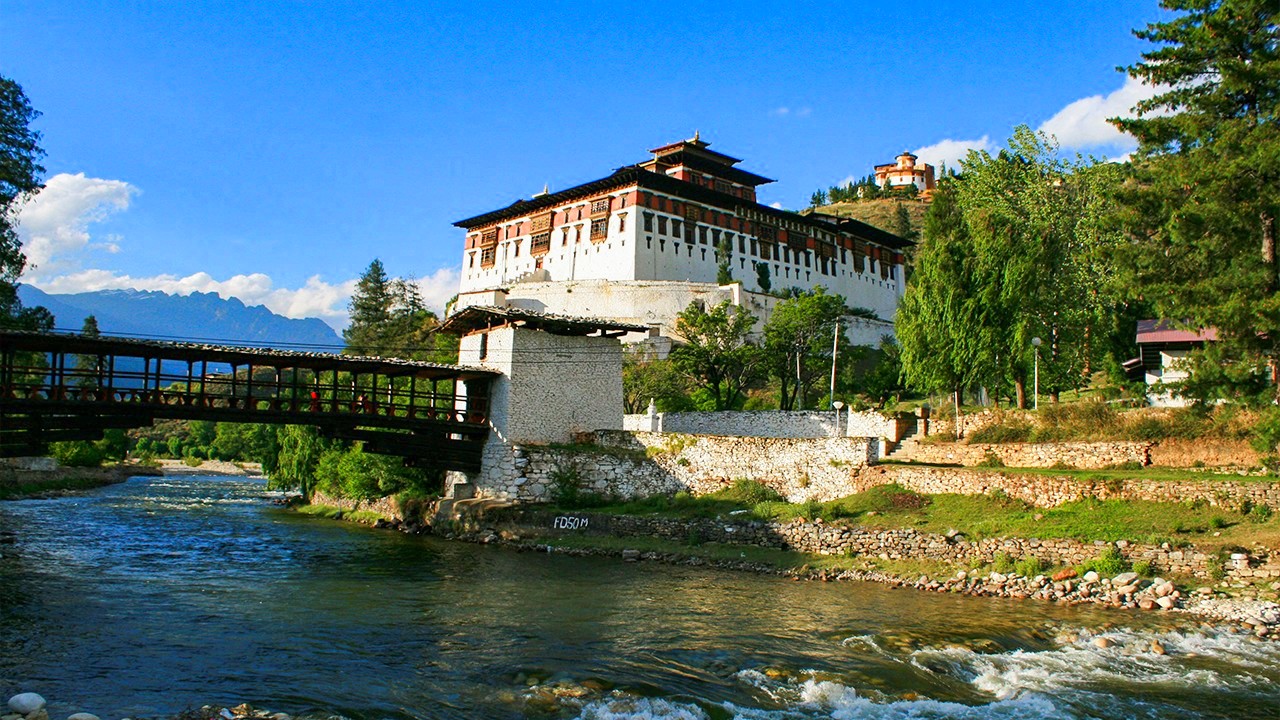
- Architectural Marvel: The dzong is a stunning example of Bhutanese architecture, featuring towering walls and beautifully intricate woodwork.
- Historical Significance: Built in the 15th century as a defense fortress, it has been an important bastion for the region’s defense throughout the centuries.
- Religious Hub: The dzong serves as the administrative seat and monastic home for the district, housing the district Monastic Body and government offices.
- Paro Tshechu: Host to the Paro Tshechu, one of the biggest religious festivals in Bhutan, which attracts both locals and tourists who come to witness the vibrant dances and cultural displays.
- Museum Quality Artifacts: Inside, the dzong houses an exceptional collection of sacred masks and costumes, some dating back several centuries.
- Watchtower Museum: Adjacent to the dzong is a former watchtower, now the National Museum of Bhutan, which offers further insights into Bhutan's rich cultural heritage.
- Scenic Surroundings: The dzong’s elevated position offers breathtaking views of the surrounding valley and river, providing picturesque landscapes year-round.
- Cultural Icon: It's frequently used as a backdrop in Bhutanese and international films, showcasing its iconic structure and beauty, further cementing its place in the cultural imagery of Bhutan.
Paro Dzong stands not only as a monumental piece of Bhutanese cultural and architectural achievement but also as a vibrant living center of tradition and history. Visitors to the dzong can immerse themselves in the spiritual life of Bhutan while enjoying the stunning vistas that surround this historic fortress. Whether you are exploring its halls during a festival or enjoying the quiet off-season, the Paro Dzong offers a timeless glimpse into the heart of Bhutanese heritage.
Trongsa Dzong
Trongsa Dzong stands as a monumental structure in the heart of Bhutan, reflecting the country's deep historical roots and strategic importance. Often described as the dragon fortress, it is perched on a ridge overlooking the Mangde Chhu river and offers a commanding view of the surrounding valleys. This dzong is not only a testament to Bhutanese architecture but also plays a central role in the nation’s governance and religious life.
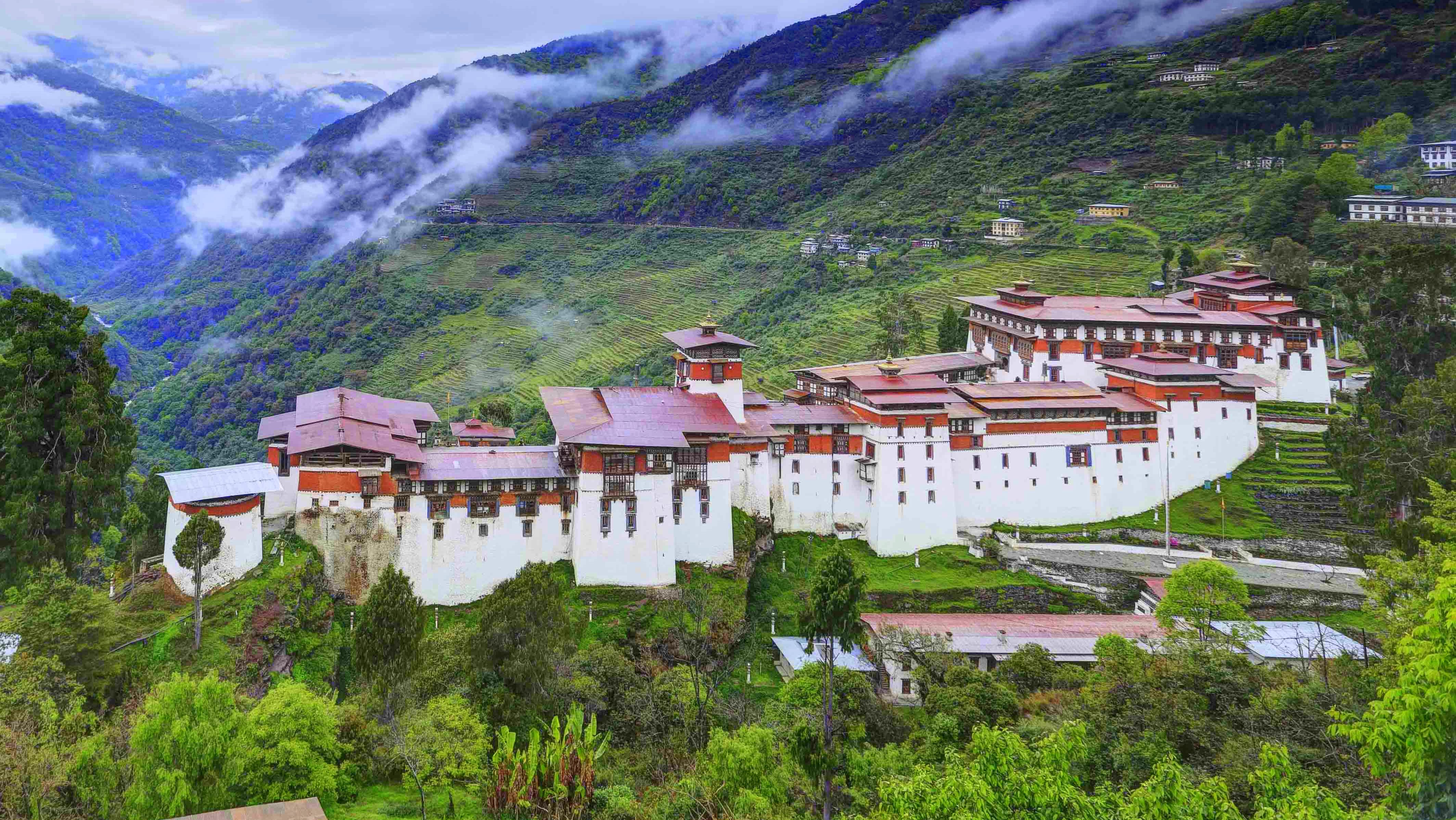
- Strategic Significance: Historically, Trongsa Dzong has been the seat of power over central and eastern Bhutan, controlling the east-west trade routes long before the unification of the country.
- Architectural Grandeur: The dzong is an architectural masterpiece, featuring intricate woodwork, multiple courtyards, and a robust structure that has withstood the tests of time and nature.
- Cultural Heart: It serves as the administrative and monastic center of the Trongsa district, integrating governmental functions with religious practices.
- Royal Tradition: By tradition, the King of Bhutan first serves as the Trongsa Penlop (governor) before ascending the throne, highlighting the dzong’s importance in the royal heritage of Bhutan.
- Trongsa Tshechu: Like many dzongs, it is the venue for the annual Trongsa Tshechu, a vibrant festival that features religious mask dances, rituals, and community gatherings.
- Museum of Monarchy: The dzong houses a museum dedicated to the Wangchuck dynasty, offering visitors insights into the history of Bhutan’s kings and the role of the dzong in their ascension.
- Panoramic Views: The location atop a ridge provides breathtaking panoramic views of the deep valleys and lush forests that characterize central Bhutan.
- Historical Artifacts: The dzong is home to a rich collection of historical artifacts, ancient manuscripts, and religious iconography that tell the story of Bhutan’s spiritual and temporal evolution.
Trongsa Dzong is more than just an architectural marvel; it is a cultural beacon that offers profound insights into Bhutan's royal history and religious traditions. Its strategic position and historical significance make it a pivotal landmark for anyone interested in the roots of Bhutanese governance and culture. Visiting Trongsa Dzong provides a unique opportunity to delve into the layers of history and tradition that define this Himalayan kingdom.
Thimphu Dzong
Thimphu Dzong, officially known as Tashichho Dzong, serves as the grandiose seat of Bhutan’s government and the central monastic body. Situated on the western bank of the Wang Chhu river, it is a formidable presence in Thimphu, blending Bhutanese architectural grandeur with profound spiritual and administrative functions. This dzong is a symbol of the harmonious integration of the temporal and the divine, which is a cornerstone of Bhutanese culture.
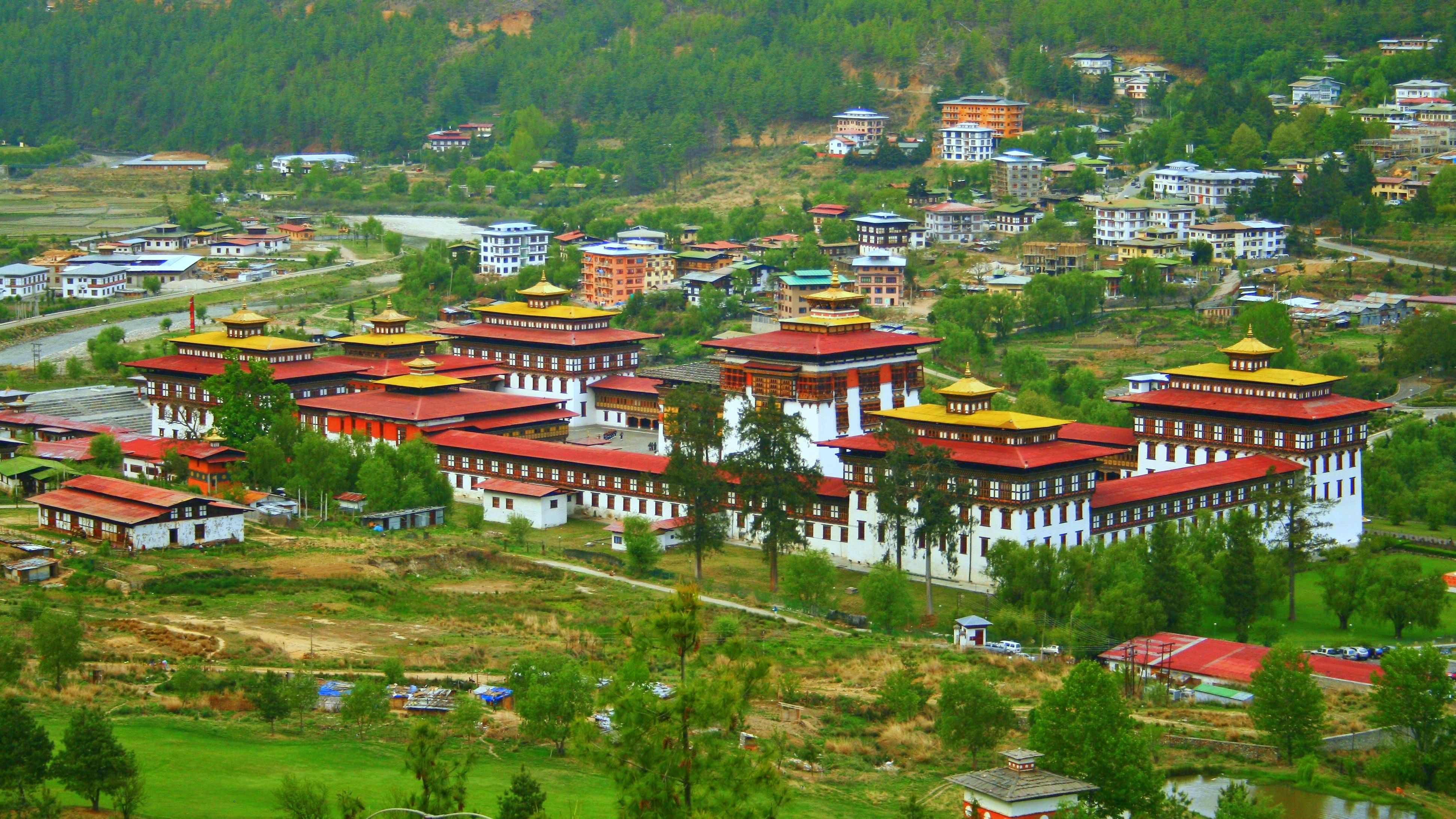
- Administrative Epicenter: As the main office of the King and the seat of the Government of Bhutan, Thimphu Dzong is the nerve center of political activity in the country.
- Spiritual Significance: It houses the offices and throne room of His Majesty the King of Bhutan and includes a significant monastery that is home to the spiritual leader of Bhutan, the Je Khenpo.
- Architectural Marvel: Known for its striking architecture, the dzong features meticulously crafted woodwork, expansive courtyards, and impressive structures that reflect the essence of Bhutanese style.
- Cultural Festivities: It is the venue for the Thimphu Tshechu, one of the most vibrant and popular festivals in Bhutan, attracting thousands of locals and tourists every year for days of religious ceremonies, dances, and cultural celebrations.
- Historical Roots: The original dzong was built in 1641 and has undergone several rebuilds and expansions, most notably in 1962, to accommodate the modern needs of a growing capital.
- Panoramic Views: The dzong's location offers stunning views of the surrounding area, including the lush valley and flowing river, providing a serene backdrop to its bustling activity.
- Strategic Importance: Its strategic location has historically protected Thimphu and the Raidāk valley from invasions and played a crucial role in the country’s defense strategy.
- Accessibility: Unlike many other dzongs, Thimphu Dzong is easily accessible from the capital city, making it a frequent stop for tourists and locals alike who wish to explore its grandeur and significance.
Thimphu Dzong stands as a testament to Bhutan’s rich heritage and contemporary vitality. It encapsulates the dual essence of Bhutan as both a modern state and a deeply spiritual society. A visit to Thimphu Dzong offers not just a glimpse into the architectural beauty and religious significance of Bhutanese dzongs but also provides insight into the everyday workings of Bhutanese governance and cultural life. It remains a vital part of the Thimphu skyline and the political and spiritual life of Bhutan.
Jakar Dzong
Jakar Dzong, or the "Castle of the White Bird," presides over the picturesque Chamkhar Valley in Bumthang, Bhutan. This fortress is renowned not only for its commanding architectural presence but also for its significant role in the religious and administrative life of the region. The dzong's name is derived from a legend where a white bird signaled the auspicious location for its construction.
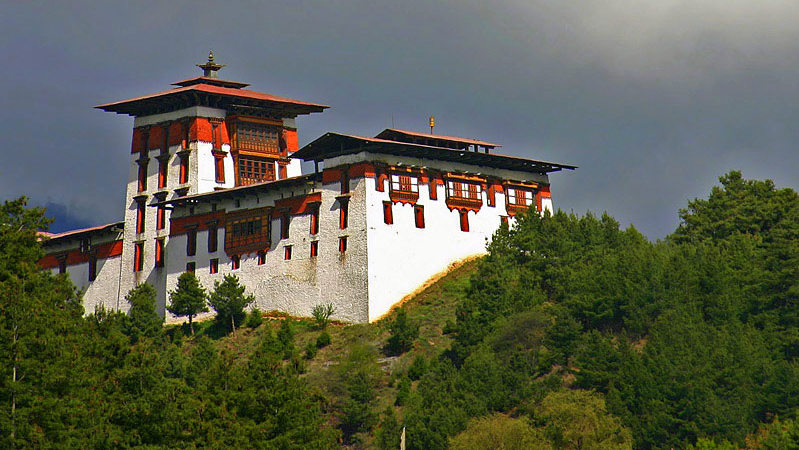
- Strategic Location: Perched on a ridge above Jakar town, the dzong dominates the landscape, offering strategic views of the entire valley—key for both historical defense and current administrative oversight.
- Architectural Splendor: Jakar Dzong is noted for its massive structure, which includes a large central tower (utse) surrounded by over sixty meters of high defensive walls, making it an imposing sight in the valley.
- Religious Significance: It serves as the main dzong of the Bumthang district, hosting important religious festivals and functions as the spiritual center for the region.
- Historical Importance: Built in 1549 by the Tibetan Lam Nagi Wangchuk, the dzong has seen several renovations and expansions, most notably after a fire in the 17th century.
- Festive Venue: The dzong is a focal point during the Jakar Tshechu festival, celebrated with religious mask dances and cultural displays that attract visitors from across Bhutan and the world.
- Administrative Center: It houses the administrative and judicial offices of the Bumthang district, continuing its long-standing role as a seat of governance.
- Panoramic Views: Visitors to the dzong can enjoy panoramic views of the valley, especially breathtaking during the autumn when the landscape turns a vibrant gold.
- Cultural Repository: Inside, Jakar Dzong is home to some of Bhutan's most treasured religious artifacts and thangkas, preserving centuries of Bhutanese spiritual and artistic traditions.
Jakar Dzong stands as a beacon of cultural and historical significance in Bhutan's spiritual heartland of Bumthang. Its robust architecture and panoramic supremacy blend seamlessly with its spiritual and administrative duties, making it a key destination for those seeking to immerse themselves in the deep-rooted traditions and breathtaking landscapes of Bhutan. A visit to Jakar Dzong is not just a step back in time; it is a journey into the living heart of Bhutanese culture and governance.
Dzongdrakha Dzong
Dzongdrakha Dzong, often referred to as the mini-Taktsang, is a lesser-known yet profoundly significant temple complex in Bhutan. Nestled above the village of Bondey, near Paro, this dzong serves as a serene counterpart to the more frequented Paro Taktsang, or Tiger's Nest. Its relative obscurity makes it a peaceful sanctuary for those looking to explore Bhutan's spiritual sites away from the more crowded tourist paths.
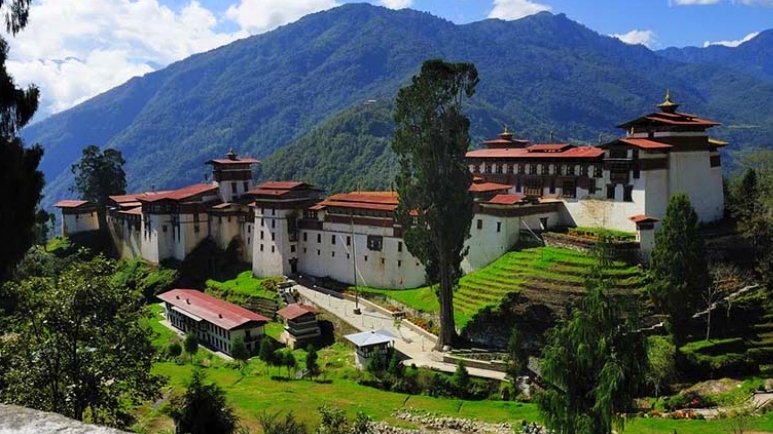
- Cliffside Sanctuary: Perched on a cliffside, similar to the famous Tiger's Nest, Dzongdrakha offers a tranquil setting with stunning views over the Paro valley, providing a perfect backdrop for meditation and contemplation.
- Historical Significance: Although not as old or as well-known as some of Bhutan's larger dzongs, Dzongdrakha holds a special place in the local community's heart due to its historical roots dating back several centuries.
- Spiritual Solitude: The dzong is renowned for its quiet atmosphere and fewer visitors, offering a more intimate and reflective experience than bustling religious sites.
- Architectural Features: The complex includes several temples built into the rock face, showcasing traditional Bhutanese architecture harmoniously integrated with the natural environment.
- Religious Festivals: Despite its smaller size, Dzongdrakha hosts vibrant local festivals, including unique religious rituals and mask dances that draw in the local community and offer a glimpse into Bhutan's spiritual life.
- Iconography and Art: The dzong houses an array of religious art inside, including statues, thangkas, and murals depicting various aspects of Buddhist mythology and teachings.
- Accessibility: Dzongdrakha is more accessible than some of the more remote dzongs, making it an ideal stop for those touring the Paro district but wishing to escape the typical tourist routes.
- Serene Environment: The surrounding area, with its lush greenery and the sounds of nature, enhances the spiritual ambiance, making Dzongdrakha a perfect place for prayer and meditation.
Dzongdrakha Dzong offers a unique blend of spiritual solace, historical significance, and natural beauty, making it a must-visit for those seeking a deeper understanding of Bhutan's religious traditions away from the hustle and bustle. Its serene environment and rich cultural offerings make it an ideal spot for spiritual seekers and those interested in the quieter side of Bhutanese heritage. Whether you come for the architecture, the festivals, or the tranquil atmosphere, Dzongdrakha provides a profound and enriching experience.
Lhuentse Dzong
Lhuentse Dzong is one of Bhutan’s most picturesque and secluded dzongs, perched high above the Kuri Chhu river in the eastern region of Lhuentse. Known for its remote location and significant historical and cultural importance, Lhuentse Dzong is the ancestral home of Bhutan's royal family and a stronghold of the country’s spiritual heritage.
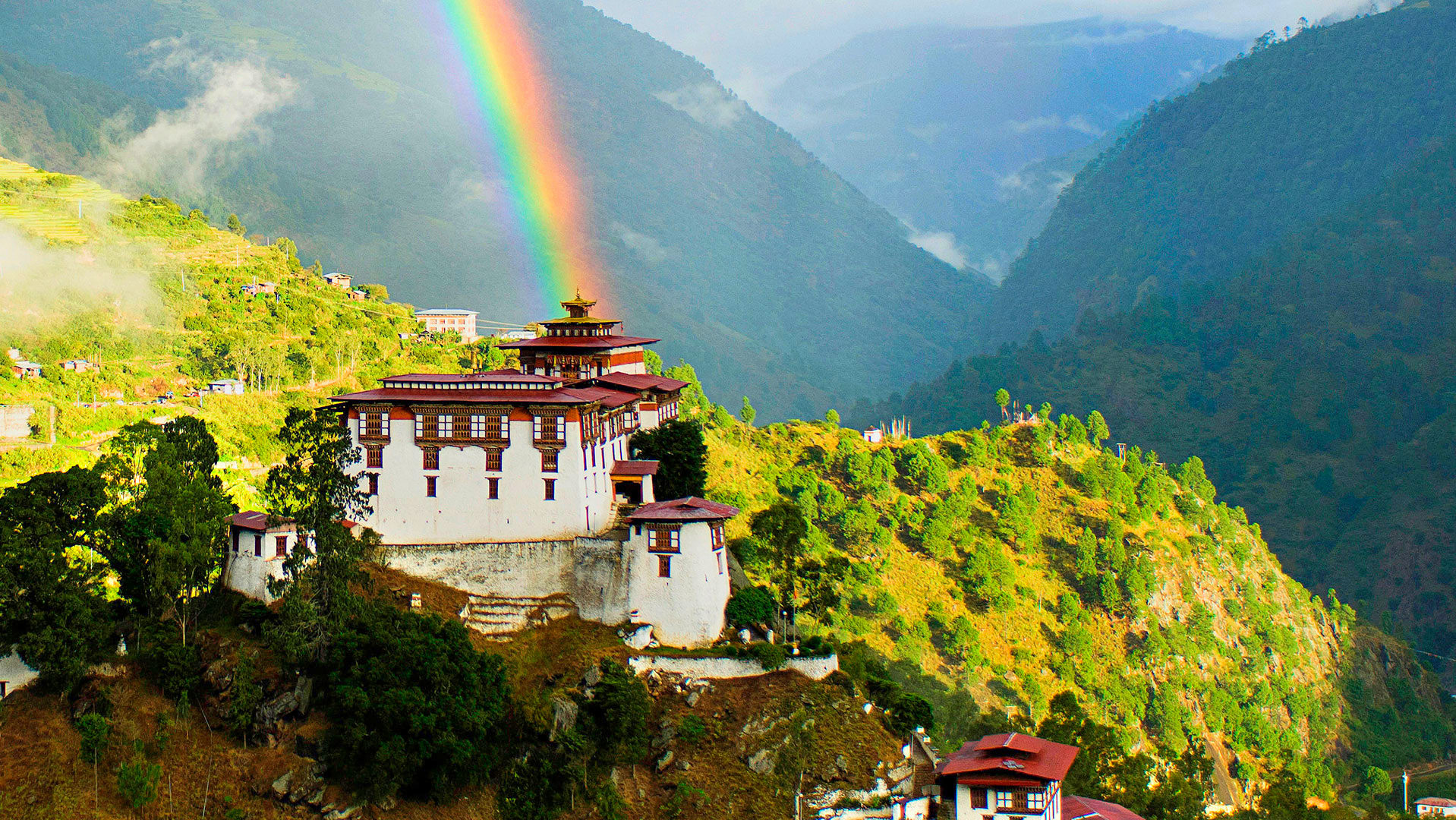
- Strategic Location: Positioned strategically on a hilltop, the dzong oversees the Kuri Chhu valley, providing not only defense in its early days but also a commanding view of the stunning landscapes that surround it.
- Architectural Splendor: Reflecting the classic Bhutanese architectural style, the dzong features intricately decorated walls, traditional woodwork, and a large central tower that stands as a testament to the craftsmanship of Bhutanese artisans.
- Royal Heritage: As the birthplace of the Wangchuck dynasty, Lhuentse Dzong holds a special place in the hearts of the Bhutanese people, linking it directly to the royal family and its lineage.
- Spiritual Center: The dzong serves as a major religious site for the region, housing many sacred relics and serving as the central monastic body for the district.
- Cultural Festivals: It hosts several annual religious festivals, including the popular Lhuentse Tshechu, which features unique mask dances and cultural performances that draw spectators from across the region.
- Isolation and Serenity: Its remote location ensures that Lhuentse Dzong remains one of the least visited dzongs by tourists, offering a more authentic and serene experience for those who make the journey.
- Artistic Heritage: The region is renowned for its weavers and their intricate handwoven textiles, which are considered some of the best in Bhutan. The dzong itself is a showcase for these local crafts, reflecting the area’s rich artistic traditions.
- Natural Surroundings: The natural beauty surrounding the dzong, with lush forests and the meandering river below, makes it a picturesque destination for nature lovers and photographers alike.
Lhuentse Dzong stands as a beacon of cultural pride and spiritual integrity, nestled in one of Bhutan’s most beautiful and untouched landscapes. Its historical significance, coupled with its stunning architecture and vibrant cultural life, make it a profound symbol of Bhutanese heritage. For those seeking to explore the depths of Bhutan’s royal history and spiritual traditions, Lhuentse Dzong offers a uniquely enriching and serene experience, far from the well-trodden paths of mainstream tourism.
Gasa Dzong
Gasa Dzong, also known as the Fortress of the Overlord of Gasa, stands proudly in the remote and picturesque region of Gasa in northern Bhutan. This dzong is a testament to the kingdom’s rich history and strategic fortifications, and it remains a beacon of tranquility and spiritual resilience, nestled among some of the most pristine landscapes in Bhutan.

- Historical Significance: Built in the 17th century to defend against Tibetan invasions, Gasa Dzong has played a crucial role in the defense and administration of the northern regions of Bhutan.
- Strategic Location: Perched on a hill with commanding views of the surrounding valleys and mountains, the dzong’s location was strategically chosen for its ability to monitor and control the region effectively.
- Architectural Features: Gasa Dzong is celebrated for its unique architectural style that incorporates both Bhutanese and Tibetan elements, reflecting the historical interactions across the border.
- Spiritual Hub: The dzong serves as the spiritual center for the region, housing several important religious artifacts and serving as a base for the district's monk body.
- Natural Hot Springs: Nearby the dzong, the famous Gasa hot springs attract visitors seeking healing and relaxation in the mineral-rich waters, believed to have medicinal properties.
- Cultural Festivities: Gasa Dzong is the venue for the annual Gasa Tshechu, a vibrant festival that brings together the local community and visitors to celebrate Bhutanese cultural and religious traditions through dance, music, and spiritual ceremonies.
- Remote Beauty: Its isolated location means that Gasa Dzong remains one of the least commercially developed dzongs in Bhutan, offering an authentic glimpse into the traditional lifestyle and natural beauty of the Himalayas.
- Trekking Gateway: The region around Gasa Dzong is a popular starting point for treks into the beautiful and challenging landscapes of northern Bhutan, including the famed Snowman Trek.
Gasa Dzong is more than just a fortress; it is a symbol of the enduring strength and serenity of Bhutanese culture. For those adventurous enough to venture into this less-traveled part of Bhutan, the dzong offers a profound connection to the country’s history, spirituality, and natural splendor. Whether you come for the hot springs, trekking, or cultural immersion, Gasa Dzong provides a peaceful retreat into the heart of the Himalayas, where every visitor can find solace and inspiration.
The Dzongs of Bhutan are not merely architectural marvels but the very heartbeats of the nation, intertwining the spiritual, historical, and administrative lifelines of the country. From the imposing walls of Punakha Dzong to the remote sanctity of Gasa Dzong, each dzong tells a unique story of Bhutan’s heritage and cultural identity. These fortresses, set against the breathtaking Himalayan landscape, serve as venues for vibrant festivals, administrative centers, and spiritual retreats, offering a window into the soul of Bhutan. For travelers and historians alike, the dzongs are essential for understanding the depth and richness of Bhutanese tradition and the ongoing story of a people deeply connected to their past, yet moving forward into the future with integrity and purpose.
FAQs for the Dzongs in Bhutan
Q: What exactly is a dzong in Bhutan?
A: A dzong is a type of fortified monastery that serves both religious and administrative purposes in Bhutan. These structures are architectural landmarks that house monastic bodies and government offices.
Q: How many dzongs are there in Bhutan?
A: Bhutan features 20 major dzongs, one for each district, along with several smaller ones. Each plays a vital role in the cultural and administrative life of its region.
Q: Why were dzongs built in Bhutan?
A: Dzongs were originally built for strategic defense against invading forces and have evolved into centers of religious and government administration.
Q: Can tourists visit all dzongs in Bhutan?
A: Most dzongs in Bhutan are open to tourists, especially during daytime hours. However, some areas within the dzongs might be restricted to the public, particularly during official functions and religious ceremonies.
Q: What is the best time to visit dzongs in Bhutan?
A: The best time to visit dzongs in Bhutan is during the spring and autumn months when the weather is pleasant and several dzongs host vibrant festivals, such as the famous Paro and Thimphu Tshechus.
Q: What are some of the most famous dzongs in Bhutan?
A: Some of the most famous dzongs include Punakha Dzong, Paro Dzong, Trongsa Dzong, and Thimphu Dzong, each known for their historical significance and architectural beauty.
Q: What should visitors wear when visiting a dzong in Bhutan?
A: Visitors should wear modest clothing covering shoulders and knees as dzongs are sacred sites. Hats should be removed before entering the dzong premises, and footwear is often removed before entering the inner temples.
Q: Are there any specific cultural etiquettes to follow while visiting dzongs?
A: Yes, visitors should speak softly, avoid touching sacred objects, and always circulate in a clockwise direction around religious artifacts and buildings. Photography may be restricted in certain areas.
Q: How do dzongs contribute to Bhutanese culture?
A: Dzongs are central to Bhutanese culture as they host religious festivals, house historical artifacts, and serve as community centers where the local traditions and governance are upheld and celebrated.
Q: Is there an entrance fee to visit dzongs in Bhutan?
A: Some dzongs may charge a small entrance fee, which is usually used for maintenance and preservation of these historic sites. However, the fee structures can vary, and it’s advisable to check in advance or consult with a local guide.


